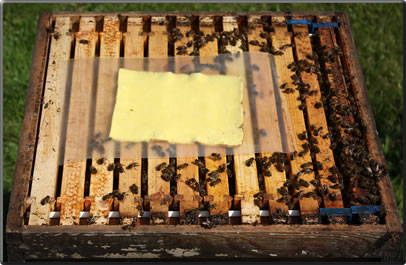- Joined
- Sep 7, 2013
- Messages
- 307
- Reaction score
- 246
- Location
- Loughborough
- Hive Type
- 14x12
- Number of Hives
- 11
Hi... it's been a long time since my last post (apologies), but I would be interested in opinions generally, and also any specific experiences of others who have attempted to use MAQS as a springtime varroa treatment since it came to this country. I looked for related threads, and whilst there are some interesting insights and links (e.g. http://www.beekeepingforum.co.uk/archive/index.php/t-2636.html - where e.g. Finman's views on Formic Acid are clear), I cannot see any recent 'reports from the field'.
I am entering my 5th year (4th full year), and, after having started beekeeping thinking I could get by with a single Autumn Apiguard treatment, plus the occasional icing sugar-dusting in-season (minimal intervention etc...) the winter loss of a colony, some DWV, plus some huge loads I have since seen in my hive(s) led me to quickly consider a more efficacious spring treatment.
OA trickling or sublimation has never appealed; I don't know why. I do appreciate that in chemical terms, both are organic acids, and that, in its manufacture, Formic Acid is no more or less 'organic' than OA (i.e. I know they don't go boiling up vat-loads of ants ) ... but I was just drawn to that option; and hence to MAQS strips.
) ... but I was just drawn to that option; and hence to MAQS strips.
Now, I know MAQS strips have the following two disadvantages over OA:
1) Cost
2) Timing of application, given the need to apply on a day where the temp >10c
... However, I am in my 3rd year now of using these as a spring treatment, and am again expecting to experience great success when I take out the inspection board tomorrow, and as I continue to monitor daily drops. It appears very effective indeed.
For me, it is a complete no-brainer, for the following two reasons:
1) The Formic Acid penetrates brood cappings, and therefore means that all mites are affected; not just phoretic mites. It is therefore a one-shot treatment, and appears (in my limited field experience at least) to have no adverse effect on the brood, or on the queen (though she might go off-lay for a day or two)
2) Simplicity of application. Open the hive, smoke them down and pop the strips on. Done
I am therefore surprised that I have not heard anyone else talk about using MAQS at this time.
Is there a reason (i.e. am I an idiot ? have I just been lucky ??) ? Thanks.
I am entering my 5th year (4th full year), and, after having started beekeeping thinking I could get by with a single Autumn Apiguard treatment, plus the occasional icing sugar-dusting in-season (minimal intervention etc...) the winter loss of a colony, some DWV, plus some huge loads I have since seen in my hive(s) led me to quickly consider a more efficacious spring treatment.
OA trickling or sublimation has never appealed; I don't know why. I do appreciate that in chemical terms, both are organic acids, and that, in its manufacture, Formic Acid is no more or less 'organic' than OA (i.e. I know they don't go boiling up vat-loads of ants
Now, I know MAQS strips have the following two disadvantages over OA:
1) Cost
2) Timing of application, given the need to apply on a day where the temp >10c
... However, I am in my 3rd year now of using these as a spring treatment, and am again expecting to experience great success when I take out the inspection board tomorrow, and as I continue to monitor daily drops. It appears very effective indeed.
For me, it is a complete no-brainer, for the following two reasons:
1) The Formic Acid penetrates brood cappings, and therefore means that all mites are affected; not just phoretic mites. It is therefore a one-shot treatment, and appears (in my limited field experience at least) to have no adverse effect on the brood, or on the queen (though she might go off-lay for a day or two)
2) Simplicity of application. Open the hive, smoke them down and pop the strips on. Done
I am therefore surprised that I have not heard anyone else talk about using MAQS at this time.
Is there a reason (i.e. am I an idiot ? have I just been lucky ??) ? Thanks.





